Search Results
Stem Cell Transplantation
Allogeneic stem cell transplantation has been used to treat and sometimes cure chronic myelomonocytic leukemia (CMML) patients. However, because of the high, sometimes life-threatening risks associated with stem cell transplantation, doctors rarely use it in elderly patients or patients in poor health.
Follow-Up Care
Follow-up care is important with both aggressive and indolent forms of NHL because if the disease recurs, curative options are still available for many people. Follow-up care needs to be individualized and should be based on several factors, including how the disease initially manifested. Patients who are in remission should continue to be monitored by clinical assessment as determined by their doctor. In the past, computed tomography (CT) scans or other diagnostic imaging were done routinely in an attempt to detect relapse.

Tina
As a lymphoma survivor, I want to take a moment to share my personal journey, as well as tell you all how The Leukemia and Lymphoma Society (LLS) was with me every step of the way.
It all started in March 2018. We had been living in the UK with our two young daughters, and life was good! I had been feeling tired and had this hollow sound behind my ear. I saw doctors in both the UK and the U.S. who assured me it was most likely just my body trying to get over a sinus infection.
Stem Cell Transplantation
The goal of stem cell transplantation is to cure the patient’s cancer by destroying the cancer cells in the bone marrow with high doses of chemotherapy and then replacing them with new, healthy blood-forming stem cells. The healthy blood stem cells will grow and multiply forming new bone marrow and blood cells. There are two main types of stem cell transplantation. They are
Lori
Lori’s journey to becoming a Leukemia & Lymphoma Society (LLS) volunteer began back in 2002 through her own experience with being diagnosed with Myelofibrosis (MF). Lori had just embarked on a new job as a real estate agent to a new home builder when she began to feel extremely tired and have pain in her hands. She chalked up her sickness to a case of the flu; however, after deciding to go to her doctor, he recommended some blood work which came back showing high white counts. Her doctor referred her to an Oncologist who did a bone marrow biopsy.
Disease Complications
As myelofibrosis (MF) progresses, complications may arise:
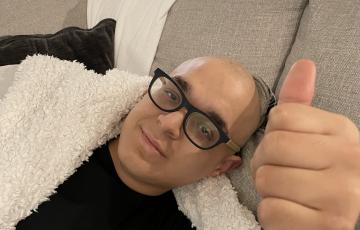
Joshua
My name is Joshua. I was born and raised in South Florida and moved to Oregon after high school 8 years ago. I can’t say that I had a difficult childhood growing up just difficult circumstances that were challenges to overcome. I am what most people would consider an introverted type of personality, and while I was raised in a home with very caring parents and sisters, I’ve just always found it difficult to fit in, especially once I got to high school. I’m tall, at almost 6 feet, and very smart, always in advanced placement classes.

Sonny
The last conversation I had with my daughter Sonny was one that I will never forget. As she sat there exhausted from the leukemia and CDiff and sepsis that was ravaging her body; we talked about how much of a fight she put up. She could only respond with a short, “I know Momma”. To which I replied, “You don’t have to fight anymore baby.” Again, “I know Momma”. I told her that her Poppa was waiting in Heaven on his tractor to take her for a ride like she used to love when she was little.
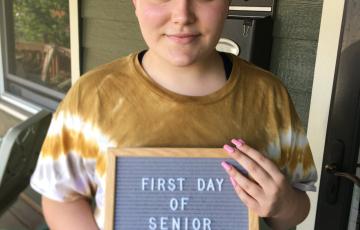
Madeleine
We were lucky. It seems strange to frame it that way, but it's true.
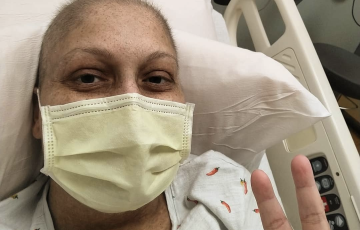
Sara
In May 2019, I was surprised and delighted to find out that I was pregnant. Throughout the summer, I eagerly delved into extensive reading and research on pregnancy and the first-time mom experience. However, this period also brought about a challenging early pregnancy. I found myself short of breath after even short walks, relied on numerous naps, and surprisingly didn't experience intense pregnancy cravings. In fact, I wasn't gaining much weight.
Follow-Up Care
Follow-up medical care is important for every Hodgkin lymphoma patient. Follow-up care helps the doctor monitor you to see if disease has recurred or relapsed, or to see if more treatment is needed. Talk to your doctor about how often to have follow-up visits and what laboratory tests, scans, or other imaging you need. It is important to get a record of your cancer treatment including the drugs you received so that your doctor can follow up on specific long-term effects that may be associated with your treatment.
Lymph Node Biopsy
A lymph node biopsy detects cancer cells in lymph nodes and confirms a lymphoma diagnosis. Surgery is used to obtain all or part of a lymph node (or sometimes another tumor site) because it gives the pathologist or hematopathologist more tissue to examine. The tissue examination may detect cancerous tumors, noncancerous masses or infection. Since treatment differs for various types of blood cancers, a precise diagnosis is needed. A second opinion from a pathologist or hematopathologist may be needed to make the correct diagnosis.
How Is It Done?
Resources for Survivors
Survivorship WorkbookUse this Survivorship Workbook to collect all the important information you need throughout diagnosis, treatment, follow-up care and long-term management of a blood cancer.
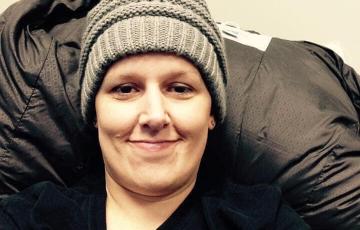
Amy
It was July 2014, I got up and went for a quick morning jog before work. It’s Iowa, it was hot and humid, but I was unusually winded after that jog. I figured it was due to being humid outside and finished getting ready to go to work (I was a registered nurse at a physician’s clinic doing triage). During the day, I continued to feel a little winded and noticed I had a cramp in my calf. The nurse in me said to ignore it, that I was overreacting, but I decided to call my physician. She directed me to my local ER for fear of a blood clot.
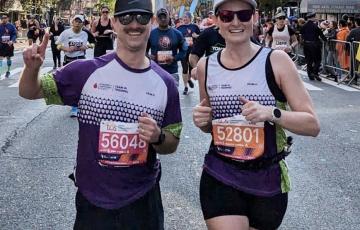
Courtney
In March 2022, I began experiencing unusual symptoms of fatigue, nausea, persistent infections, and bloody noses and gums, but I didn’t think much of it. Following a lucky-timed appointment with my primary care doctor and multiple blood tests, I was diagnosed with acute lymphoblastic leukemia (ALL). Cancer isn’t something an otherwise “healthy” 27-year-old thinks will come out of a doctor’s mouth.
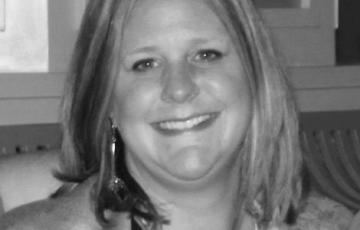
Kristen
In the fall of 2012, Kristen Comer noticed her energy level wasn't as high as it had been, but she thought nothing of it. It wasn’t until the fall of 2013 when she had unidentifiable bruises on her body and no change in her energy levels, that her general practitioner drew labs to determine a diagnosis. After three panels of blood work, Kristen was diagnosed with chronic myeloid leukemia (CML) on December 31, 2013.

Lisa
As a new graduate with a master’s degree in psychology, I, among many others, am applying to jobs out in the 'real world.' Recently, one of the job applications asked me to describe myself in three words. My answer consisted of adjectives such as determined, capable and diligent. The one word that best describes me though is one I did not say, and that is survivor.
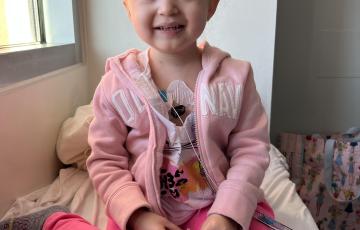
Vera
Vera was diagnosed on July 23, 2022. Her symptoms started as typical flu-like, lethargic, loss of appetite, and a fever. After three days of a fever and no one in the house showing symptoms, we took her to the pediatrician and were told she likely had a virus and to return in a week or so if symptoms didn’t subside. Over the next three days, her symptoms worsened (pale skin, a fever of 101 with Tylenol, bruises, and no appetite), and we took her to a medical professional every day, including the ER.
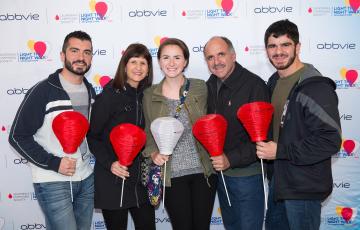
Gianna
My story began nearly seven years ago on February 28 when I received the call from my doctor and heard those dreaded words, “You have cancer.” A week prior, I had gotten a lymph node biopsy for a lump that randomly grew on my neck. As a healthy 19-year-old, cancer was the furthest thing from my mind, and receiving a diagnosis of Hodgkin lymphoma (HL) was simply unbelievable to me and my family. Hearing this news began a three-week blur of diagnostic testing and meetings with oncologists, fertility specialists, and surgeons before my first chemotherapy treatment on March 23, 2015.
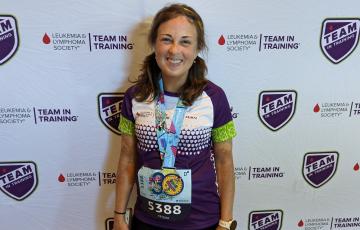
Trisha
In November 2019, Trisha and her husband were thrilled to have given birth to her second daughter. At this time, she went to visit her OBGYN for her 6-Week Postpartum Exam, and to her surprise, her doctor noticed she had an enlarged spleen and liver. She was immediately instructed to go to the emergency room, where she was admitted for one week. After a bone marrow biopsy, Trisha was diagnosed with plasma cell leukemia (PCL). Three days later, I went to another follow-up with my oncologist.
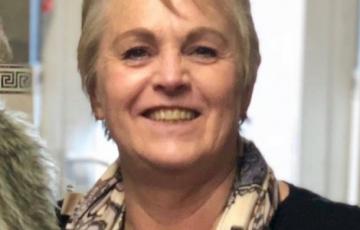
Lorna
I was diagnosed with Stage 4 NH large B-Cell primary hepatic lymphoma in April, 2013. I was told by my doctor that this was a very rare form of lymphoma with less than 200 cases in the US. I had surgery to remove 90% of the right lobe of my liver as the tumor was very large at 16cm (initially I was diagnosed with liver cancer until they removed the tumor and the pathology revealed that it was NH lymphoma).
Signs and Symptoms
Signs and symptoms are changes in the body that may indicate the presence of disease. A sign is a change that the doctor sees during an exam or in a laboratory test result. A symptom is a change that a patient can see and/or feel.
It is common for a child with ALL to feel a loss of well-being because of the lack of normal, healthy blood cells.
Symptoms of a low red blood cell count (anemia) include:
Chemotherapy and Drug Therapy
Chemotherapy is the mainstay of treatment for HL. A combination chemotherapy regimen consists of two or more chemotherapy drugs. Generally, the drugs are dissolved in fluid and usually administered via a peripheral intravenous (IV) line. If finding an accessible vein is problematic, a central line (a port, or a peripherally inserted central venous catheter (a PICC or PIC line) may be used for some HL patients.